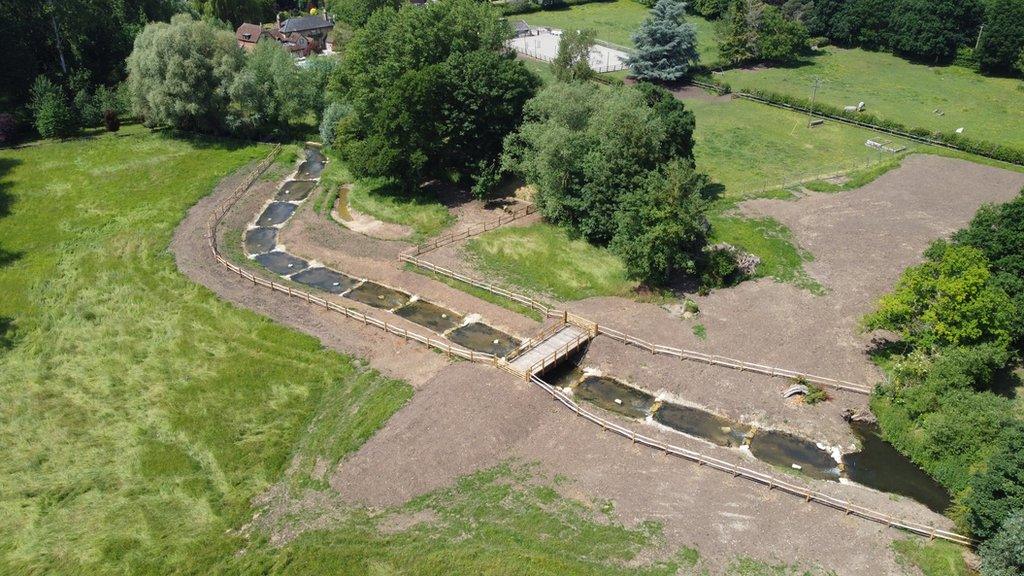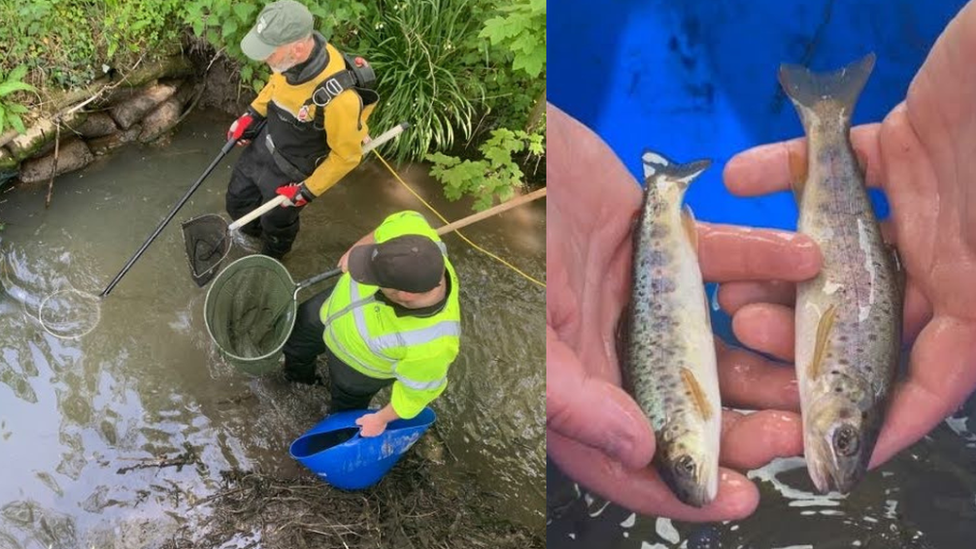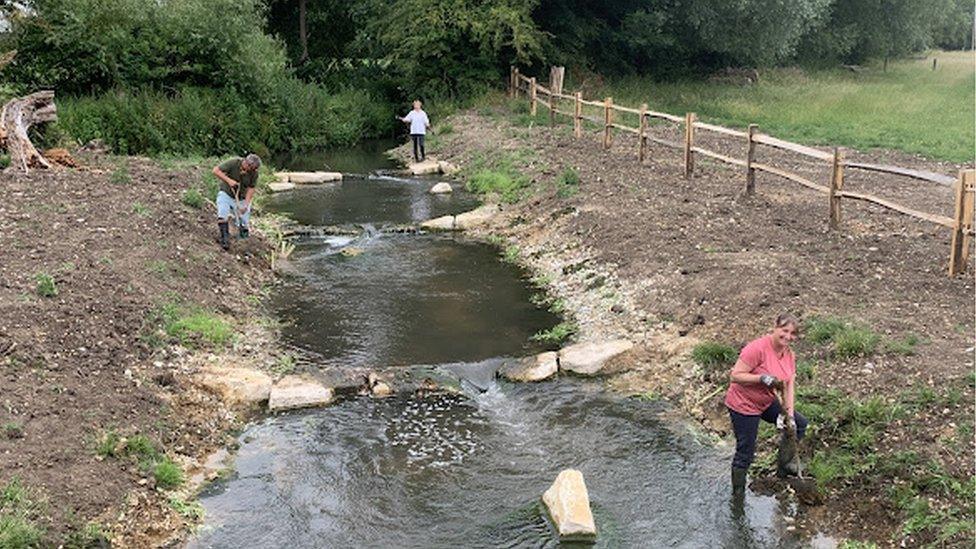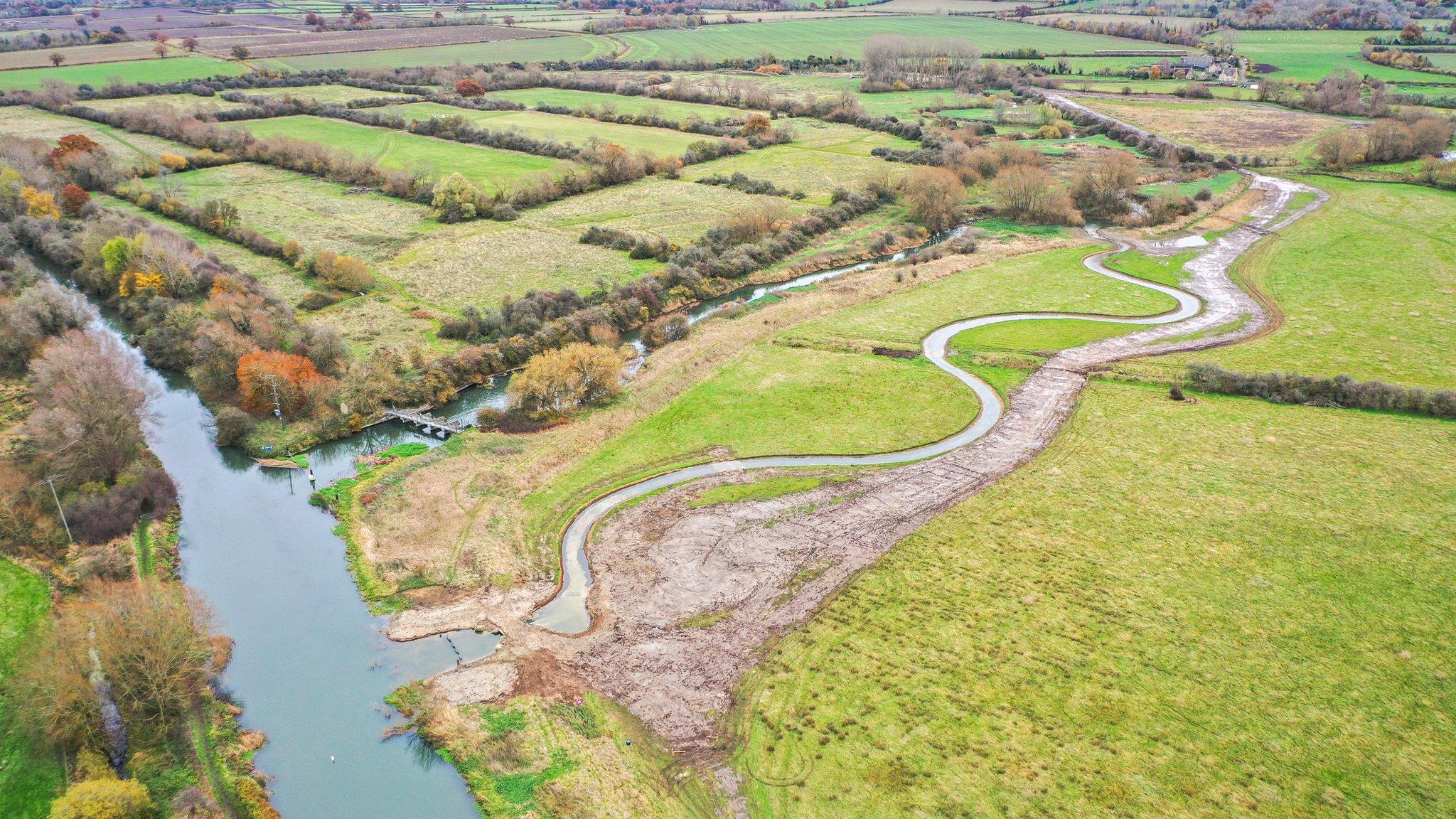Project to restore fish population creates a bypass
- Published

The milestone Stadhampton Mill Fish Pass has removed a barrier to fish passage on the Chalgrove Brook
A project to restore fish populations has removed a passage barrier on a rare chalk stream.
River Thame Conservation Trust (RTCT) completed the Stadhampton Mill Fish Pass to enable fish to move freely on the Chalgrove Brook at Chalgrove, Oxfordshire.
The channel bypasses an old mill structure which limited fish movement upstream.
The Environment Agency said it was "a fantastic outcome for wildlife".
The historic mill prevented downstream populations from accessing different habitats essential for their life cycle.

The weir previously acted as a barrier to fish movement up the Chalgrove Brook
The River Thame Conservation Trust (RTCT) came up with the solution to create the Stadhampton Mill Fish Pass.
It enables fish to freely access preferred habitat for spawning and feeding at different times of the year.
The fish could also seek refuge from potential pollution incidents and extreme conditions like floods or droughts.

Purbeck stone boulders were placed at the bypass...

... which helps species like this grass snake move up the brook
"Tackling this key barrier has opened up over 3km of habitat to the migration of fish and other species on this rare chalk stream," a spokesperson for the Environment Agency said.
"This project delivers a fantastic outcome for wildlife on the Chalgrove Brook."
Chalk streams are globally rare and the majority of them are found in southern England, external, which makes them a valuable natural resource.
The Chalgrove Brook is also home to the River Thame's only confirmed self-sustaining wild brown trout population.

Native brown trout have been caught from upstream and downstream of the old weir and translocated into the new channel...

...confirming their populations have been separated until now
The fish passage is a step further in RTCT's efforts to make the entire length of the Chalgrove Brook passable to fish.
Rick Bennett, owner of Babylon Plants in Watlington, supports RTCT in cultivating the site with seeding and planting of native floodplain meadow and aquatic plants, trees and the establishment of hedgerows.
He said they have "already successfully introduced crowfoot" and that he is hoping "one day it is a thriving and diverse ecosystem teeming with fish and other life".

RTCT volunteers hand-planted species around the new channel
Two rare black poplars, one of the most endangered tree species in the UK, external, will also be introduced to the site this autumn.

Follow BBC South on Facebook, external, Twitter, external, or Instagram, external. Send your story ideas to south.newsonline@bbc.co.uk.
- Published12 October 2022
